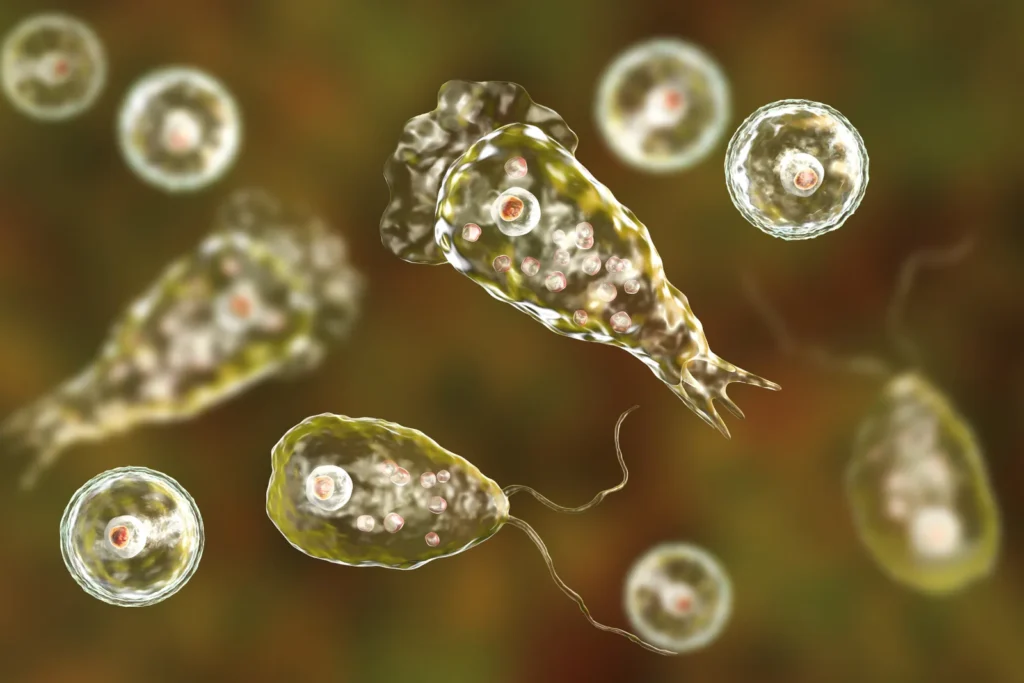A 14-year-old succumbed to amoebic meningoencephalitis infection on Wednesday night in Kerala. This is the third fatality from the brain-eating amoeba in the last two months in Kerala, health officials say. The teenager, from Kerala’s Kozhikode, had been hospitalised on June 24 after exhibiting symptoms like severe headache, nausea and vomiting. He is suspected to have caught the infection while bathing in a stream near his house.
The boy, identified as EP Mridul, died at 11:20 pm on July 3, the Kerala state health department reported on Thursday.
Mridul was a class 7 student at Farook Higher Secondary School in Kozhikode. He had been admitted to a private hospital with complaints of vomiting and headache last week. The doctors immediately diagnosed him with amoebic meningoencephalitis.
Before falling ill, he reportedly had bathed in a pond, after which officials instructed the public to avoid the pond. They also warned others who had recently taken a bath there to remain vigilant for symptoms.
This demise of the Class 7 student comes after the deaths of two other children from Malappuram and Kannur districts who also fell victim to amoebic meningoencephalitis earlier this year.
“Kerala brain-eating amoeba” is trending at the top spot on Google Trends this morning. The term has received over 10,000 searches. The brain-eating amoeba began trending on Google after the Kerala teenager’s death was reported. Infection from this single-celled organism is often fatal.
What is the “brain-eating amoeba”?
Naegleria fowleri, also known as the brain-eating amoeba, is a rare but dangerous microorganism that can cause a severe infection of the brain known as primary amebic meningoencephalitis (PAM). The amoeba can cause significant damage to the brain tissue.
Amoebic meningoencephalitis is a rare but severe brain infection caused by amoebae, particularly “Naegleria fowleri” and “Acanthamoeba” species.
The amoeba, commonly referred to as the “brain-eating amoeba”, typically infects people through contaminated freshwater, entering the body via the nose and then migrating to the brain, where it feeds on nerve tissue and causes inflammation. This disease is not transmitted from human to human.
symptoms of this disease
Symptoms usually start 1-9 days after exposure and include headache, fever, nausea, vomiting, stiff neck, seizures, altered mental status, and hallucinations.
The disease progresses rapidly, often resulting in death within 1-12 days after symptoms begin.
Medical experts have stated that the infection occurs when free-living, non-parasitic amoebae bacteria enter the body through the nose from contaminated water.
What are the symptoms of amebic meningoencephalitis?
The symptoms of primary amebic meningoencephalitis typically manifest two to 15 days after exposure. The symptoms progress rapidly. In early stages, PAM diagnosis can be difficult as the symptoms closely resemble those of bacterial or viral meningitis.
Early stage symptoms of Naegleria fowleri infection include very painful headache, high fever, stiff neck, nausea and/or vomiting.
In the later stages, the patient can become confused, disoriented, suffer from seizures, loss of balance and may slip into a coma. The infection is nearly always fatal.
How is it contracted and transmitted?
Infection occurs when Naegleria fowleri enters the body through the nose. This is because the brain-eating amoeba can easily access the brain through the olfactory nerve, which is located near the nasal cavity.
Swallowing water containing the Naegleria fowleri amoeba does not lead to infection
Primary amebic meningoencephalitis is not contagious and cannot be transmitted from person to person. According to Cleveland Clinic, there have been no cases of the infection being spread from person to person.

